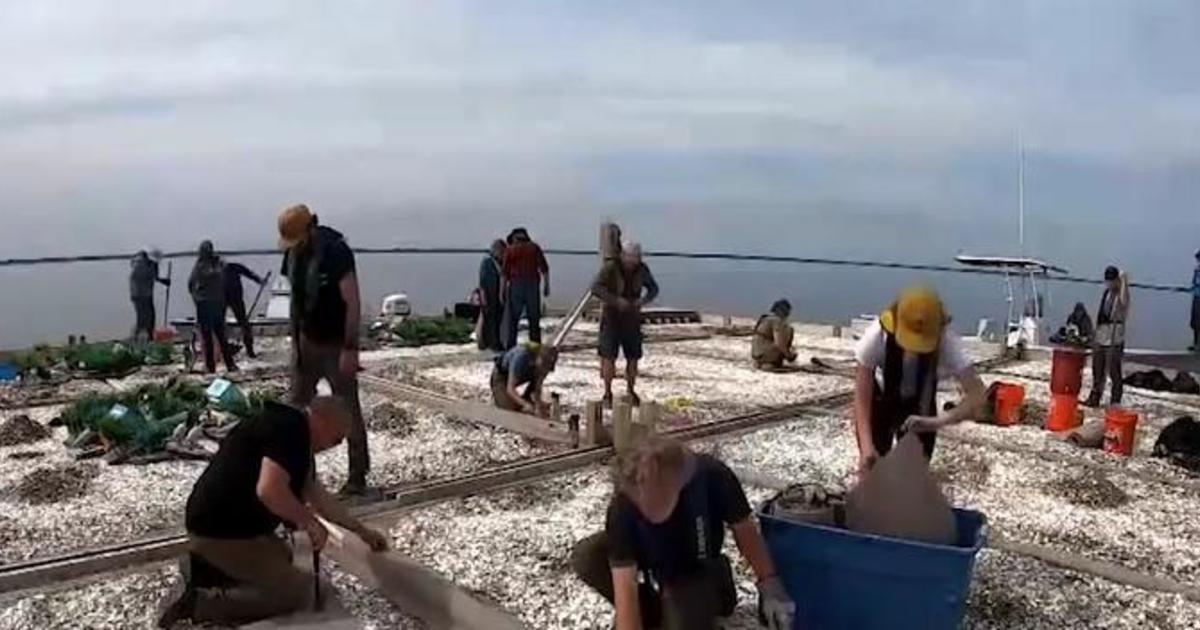Maryland Students Worked On NASA Instrument
WESTMINSTER, Md. (AP) -- Nathan Young was terrified. At just 18 years old, it was his responsibility to test and align the optics of a telescope that would eventually become part of an instrument launching into space. If that wasn't frightening enough, the telescope was property of NASA and valued at $1.4 million.
Young was one of three high school graduates from Maryland selected to work on NASA's Cloud-Aerosol Transport System, an instrument built to measure the atmosphere's clouds and particles from space and scheduled to be launched to the International Space Station on Tuesday.
About the size of a refrigerator, the instrument will be the first to incorporate three-wavelength laser technology to measure clouds, volcanic ash plumes, aerosols or airborne particles in an effort to improve the accuracy of climate change models, according to NASA.
Typically, NASA projects can take up to 10 years to complete because of the planning and paperwork necessary to move forward. Larger teams are also required to complete lengthy projects, but the NASA team that built the instrument was tasked with working with fewer people, finishing within 24 months, and funding the project on a fixed budget.
Alongside a team of 19 professionals, three Maryland students -- Young, a graduate of South Carroll High School in Winfield, Jordan Kiesel, a home-schooled student from Owings Mills, and Kyle Guzek, a graduate of Wilde Lake High School in Columbia -- worked on the project during the summers of 2012 and 2013, and were given significant responsibilities.
"The project had a need for some mechanical engineering support and a need for optical mechanical integration. They were able to work independently, and they were able to fill in for a lot of the needs we had on the project," said Stan Scott, instrument manager.
Scott serves as a mentor for the Sparks 4-H Robotics team in Carroll County, where he met Young and Kiesel.
"If I hadn't been working with these kids for many years, I wouldn't have trusted them to do what they did," he said. "You don't give a job like this to just anybody. I had watched them for the last four of five years, so I knew what they were capable of."
Scott had not previously worked with Guzek, the son of a mechanical engineer on the team, but said he was able to fit right in.
The responsibilities bestowed upon the students included telescope testing, working on optical alignment, ground support equipment and programming, among other tasks.
Matthew McGill, principal investigator of the instrument, called the students "energetic" and said their contributions were integral to the success of the project.
"We had a lot of skeptics that told us, `You can't bring students in,' " McGill said. "Part of what we're supposed to do in our jobs is mentor young people, and this was the most effective way of mentoring young people that I've encountered in 15 years because it's nonstandard, and they really got something out of it. And we got something out of it, too. They actually did work for us. I think it was wonderful, and we would try that approach again."
The young men, who at the time were recent high school graduates, accomplished something that most never will, McGill said.
"There are a lot of people working at NASA, engineers in particular, and they won't get a chance to do something like this because they're busy pushing paper or doing component development or something like that," he said. "These students got an opportunity they otherwise would never have."
Young, Kiesel, and Guzek are now college students who appreciate the experience to have worked on a NASA project and see the results of their work come to fruition.
"I helped with assembling the (telescope's) optics and a lot of the measuring to make sure the pieces were aligned," Young said. "I learned about the process of building an instrument. That was something I hadn't seen before."
Young was able to complete the task of working on the telescope's optics, but Scott said not before overcoming his fear.
"At first, he was absolutely terrified to be anywhere near it. I talked to him and told him if he did things the right way everything would be fine," Scott said. "After he got past his fear, he really didn't have any problems with it."
Now a chemical engineering major at the University of Maryland, Young said he values what he learned working for NASA.
"It will be really cool to see something I worked on in space," he said. "Overall, it was a really great experience. I'm glad I did it."
Kiesel traveled to California and Alaska for airborne-related tasks involving the instrument. He is currently studying computer science at the University of Maryland.
"It gave me a lot of experience working in a robotics type of field and working at NASA was a really cool experience and a really cool thing to say you were able to do," Kiesel said.
"When they originally brought me in, it was so I could work on some of the code for the ISS mission and a little bit later we were able to test some of that," he said. "It was a really cool real world experience working code for the ISS payload."
Guzek, who attends Howard Community College and is majoring in mechanical engineering, said "it was really amazing seeing how it was put together and how small it really was but how much it can do and the new technology being used in it."
The instrument's launch to space station has been delayed several times but is currently scheduled for 6:18 a.m. Tuesday from the Kennedy Space Center in Florida.
The instrument will orbit for a three-year period, McGill said, in hopes of providing a better understanding of the climate with possible benefits to air quality and weather forecasts.
He said the instrument will study the Earth's atmosphere, "specifically clouds and tiny particles or aerosols."
"We need to know where these things are spatially and what they are -- smoke, dust, etcetera," he said. "Each of those things impact the climate in different ways."
While orbiting, the instrument will take measurements that will identify clouds or particles at a given location and provide useful data to NASA.
"All that data gets fed into computer models, and the computer models take all the information about height," McGill said.
"And as we build up that picture in a global sense, over many orbits, a picture can start to emerge on where there are sources of pollutants and where they move from."
------
Information from: Carroll County Times of Westminster, Md.
(Copyright 2014 by The Associated Press. All Rights Reserved.)



